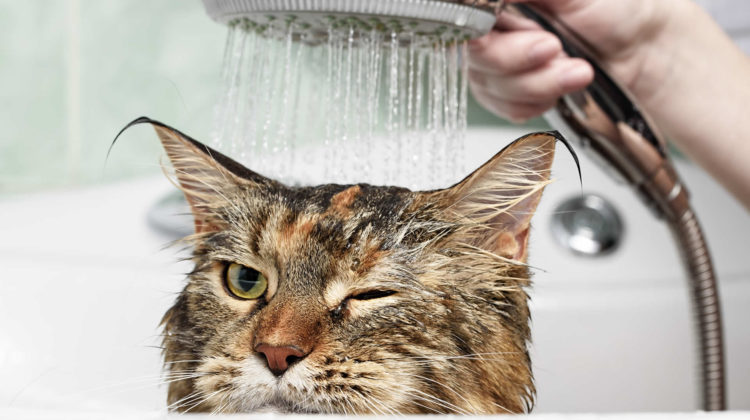
Table of Contents
For the most part, cats do not need bathing.
They can do a perfectly good job of cleaning themselves, and they do not exactly love water. However, there may be certain circumstances where their self-grooming will not be enough to do the job.
Bathing your cat can be a little short of a nightmare, especially if you are doing it for the first time.
You will need to be rapid, efficient, and extremely cautious. In this article, you will find a step by step guide on bathing your cat along with some useful tips and important do’s and don’ts.
You will also find below bathing alternatives, circumstances when bathing can be necessary, and everything else there is to know about cats and their relationship with water.
How to Bathe Your Cat
Being prepared will make the difference between a horrible and a decent bathtime experience for you and for your cat.
You should try to make it a good experience as much as you can so that your cat doesn’t code it as an awful event. Washing your cat may not be a one-time thing, so invest in your future happiness!
Things you will need:
- Treats
- Special soap
- Brush
- A distractive toy
- Towels and washcloths
- Rubber mat
- Optional washbowl
- Optional pitcher
Before Bathtime
There are important things you should prepare before getting your cat wet. They are mostly about setting up the environment to make the experience as easy as can be for both you and your cat.
Choose Your Method of Action
There are various bathing options depending on your circumstances. If you are bathing a kitten or a relatively small-sized cat, you may choose the dipping method instead of using a tap or showerhead.
Most kitties are afraid of spraying water, so if the nozzle on your showerhead is spraying and/or over-pressurized, you can try lowering its force to a minimum and keeping the nozzle of your showerhead very close to your cat’s skin so that she doesn’t observe spraying. You can also consider manually pouring water from a pitcher.
Choose Your Place of Action
Will it be the bathtub, shower, or sink? This depends on the conditions of your bathroom and your preferences.
For instance, the shower can be too low and hurt your back, or your sink may be too small for your cat. Ideally, you’ll need a large, not too shallow basin with a movable water source (a handheld showerhead rather than a fixed tap).
So a bathtub seems to be the best option, but you may also place a large washbowl in your shower.
Place a Rubber Mat at the Bottom of the Tub or Sink
This way, your cat won’t slip as she moves around and be much more comfortable.
If you don’t have a rubber mat, you can use anything that can get wet but won’t slip, like a large plastic washbowl or fabric that you won’t mind getting wet or damaged.
Choose the Right Soap
If the soap you use is wrong for your cat, it might be quite detrimental to her skin and coat.
You should look for a cat-specific, fragrance-free, and hypoallergenic soap. You may dilute it beforehand with water.
The soap should ideally not get anywhere near your cat’s eyes during bathing, but there can always be accidents. So using a soap that is not harmful to the eyes and doesn’t cause pain and itching will be a wise choice.
Adjust the Water Temperature
Lukewarm water that is close to their body temperature is ideal – which means pretty warm but not too hot.
Running the water for a bit before you get your cat in the tub is a wise idea. You don’t want to be dealing with getting the temperature right while your cat is in the tub.
Remove All Clutter Out of the Way
It is very likely that these will get in the way and make everything harder for you. Just keep the things you are going to use, like the soap and washcloths.
If you are planning to wash your cat in the sink, it may even be a good idea to remove or cover up the mirror. Seeing their own reflection in the mirror during this agitated process may startle and intimidate them.
Close the Bathroom Door
This way, you won’t have to worry about your cat escaping all soapy and wet. A closed door will also help keep the bathroom draft-free and warm.
Brush Your Cat’s Coat
This is to avoid unnecessary extension of the bathtime by getting rid of any tangles beforehand. It is important to keep the actual bathtime as short as possible.
Optional: Clip Your Cat’s Nails
This is so that your cat doesn’t scratch you very badly, so it’s mainly for your sake.
If your cat doesn’t spend time outdoors, then you can consider clipping her nails. Make sure you do it a couple of days before bathing so that your cat doesn’t associate the negative experience of nail clipping with bathtime.
During Bathtime
Start by wetting your cat’s coat with the running water. Expose her to the water as slowly and gently as you can. Don’t turn the nozzle on and start spraying her full force!
Start from her neck and move downwards, keeping the showerhead at a low force and close to the body. Stay away from your cat’s face and ears.
Turn the water off and lather your cat’s coat by scrubbing her very gently. At this stage, you should also brush your cat, especially if she has a long coat.
Turn the water back on and rinse thoroughly, making sure you leave no soap anywhere on your cat’s coat. Once she is rinsed, wrap her with a clean, dry towel, and don’t forget to give her a treat! Talk to her in a soothing, encouraging tone.
Keep in Mind:
- Never spray or lather your cat’s face. Instead, use a damp, soap-free washcloth to wipe it gently.
- Always keep one hand on your cat to avoid them running away. You may want to arrange for someone to help you.
- If you have one, you can use an eight-shaped harness to keep your cat in place while you leave both of your hands free.
- Don’t underestimate the power of toys and treats for distraction and positive reinforcement!
After Bathtime
Dry your cat with clean towels without being too forceful.
If your cat is short-haired, this will be enough. They will dry completely in a short period of time.
Try to keep them in a warm environment until they are completely dry. If you have a long-haired cat, you can consider using a low force hairdryer after blotting excess water with a towel. Make sure to keep the heat and the force at the minimum setting and don’t hold the hairdryer too close to your cat. Test it on your own skin first to avoid burns on your kitty.
Don’t forget to use your treats!
Bathing Kittens
Since kittens are small in size and more malleable in temperament, the dipping method of bathing may be more appropriate for them.
Washing a kitten is an easier process because they are less strong-headed and are easier to handle because of their size and strength.
What you will need:
- 3-4 containers of warm water (of non-slippery material)
- The appropriate soap
- Towels and washcloths
- Treats
- Optional pitcher
- Optional brush
Bathing Steps
- Gently place your kitty in the first container, making sure she can hold on to the rims while standing on her hind legs. The containers should be wide but not too deep for your kitten’s size so that when she is up on her feet her head and neck can be comfortably above water. Wet her coat completely, avoiding her face.
- Take her out of the container and put her down on a clean towel. Either gently massage her with soap or wipe her with a washcloth that you have lathered with soap beforehand. Make sure to avoid her face with the soap, instead, use a damp washcloth to gently scrub her face. You can brush her at this stage.
- Place her in the second container of water and gently rinse her coat. Once the water gets too soapy, place her in the third container, and so on until she is thoroughly rinsed and soap-free. You may want to use a pitcher to pour water on her coat or hold her under the tap over the sink as the last rinse.
- Once thoroughly rinsed, place your kitty on a dry towel and gently blot the excess water. Use as many towels it takes to dry her well. Kittens typically will not need the help of a hairdryer because their coat will dry up easier.
- Don’t forget to provide treats before and after so that your kitty makes a pleasant association with bathing and water. Voilà!
Cats and Water
Most of us have some vague notion that cats don’t particularly enjoy interacting with water.
You must surely have seen home videos of cats accidentally falling into full bathtubs and frantically trying to get out as their wet paws slide off of the slippery corners of the bathtub.
However, you must also have come across amazing videos showing swimming cats and cats that love to get into the sink when the water is running. Rest assured; these are the oddball cats that do like water.
These cats are not extremely bizarre. Some cat breeds naturally have a better relationship with water when compared to others.
There are also the in-betweeners that can tolerate water and be bathed without necessarily enjoying or hating the experience. Of course, this also depends on how you facilitate the experience!
Why Do Most Cats Hate Water?
The most popular and plausible explanation for why the majority of cats are averted to water is an evolutionary one.
Since wildcats (which are the ancestors of all modern domestic cats) lived in desert areas and had very little or no access to large bodies of water, swimming or bathing was not a part of their life. They did not need to be good swimmers or like water in order to survive and pass on their genes. Therefore, their descendants have inherited this unfamiliarity with getting wet.
There is also a very important physiological reason why most cats don’t enjoy getting wet.
It is due to their water-absorbent coats. Instead of repelling water, their coats soak it up and stay wet for long periods of time, which is quite uncomfortable for them. This also creates a lot of unnecessary weight for them and makes self-grooming very hard.
Another reason for their water aversion is that cats do not like their natural bodily scents to be washed away.
Cats clean themselves by licking their coat, which leaves the scent of their saliva. Bathing with shampoo gets rid of this scent completely and swimming definitely weakens it.
So How Come Some Breeds Do Like Water?
This question does not have a definitive answer, but there are some sound theories.
One argument is that some wildcats did have access to bodies of water, and they used them regularly to cool off from the extreme heat of their habitats. Think of them like the tigers of today – which are known to enjoy little swims every now and then. It may be that the ancestors of breeds that like water may have been these wildcats that were exposed to water.
There may also be the possibility that through generations of breeding, most of these cats lost their taste for water while only a little kept their affinity.
There are some theories that relate to individual breeds.
Certain breeds like the Abyssinian have reached Europe via long sea voyages and others have regularly been taken on ships for pest maintenance. These may explain a selective breeding pattern that favors those that are at ease with water.
Some breeds are better with water because of their physiological qualities. For example, famous for their love of swimming, Turkish Van cats have water-resistant coats. This makes swimming a pleasant experience for them.
Another important cause of water affinity is that some cats get used to water from a young age.
If a cat is exposed to water early on in her life and the experience is positive, she will most likely grow accustomed to it. This is why it is often advised to get certain breeds that need regular bathing used to water in kittenhood, like the Persian.
Cat Breeds That Like Water
Turkish Van
This breed loves swimming! So much so that the Turkish Van is often dubbed “The Swimming Cat”.
The main reason for this seems to be that their coat is naturally water-resistant, so they don’t experience discomfort while or after swimming. They can stay in the water for extended periods of time.
Water is so important for them that they have special pools for them in their official breeding facilities.
Maine Coon
North American in origin, the Maine Coon breed gets along very well with bodies of water.
In the past, Maine Coon cats have been employed aboard ships on long sea voyages for pest control. It is likely that they were preferred for this task because of their existing affinity to water, along with the fact that they have spectacular hunting skills.
They have two layers of coats and the top one is water-resistant.
Bengal
The Bengal breed is a result of crossbreeding a domestic cat and an Asian leopard cat not so long ago, between the 1960s-80s. This active and energetic breed is famous for loving to play in the water.
They are even known to follow their owners into the shower! They also love drinking water from the tap.
These are the three breeds that absolutely love water.
Other water-friendly breeds include:
Turkish Angora, Japanese Bobtail, American bobtail, Manx, Norweigan Forest Cat, Egyptian Mau, Highlander, Abbysinian, Kurilian bobtail, Siberian, Savannah.
Playing With Water
While the majority of cats do hate being immersed in water, most of them seem to like playing with it and can be quite intrigued, especially by running water.
Cats are generally curious and investigative animals. The shininess, motion, and sound of moving liquid such as running water are very attractive and interesting for them. They are fascinated and want to investigate by dipping their paws into it.
Being attracted to running water instead of still water may also be due to an instinct that tells them running water is fresher. In nature, streaming water signifies a fresh, clean source of water.
Some cats also prefer drinking water exclusively from taps.
Self-grooming in Cats
Cats are amazing at cleaning themselves. Almost fifty percent of the time they are awake is dedicated to cleaning themselves by licking.
From the moment they are born, kittens are fervently groomed by their mother. This initial grooming helps clean them of the placenta, initiates their first breath, and establishes a bond between the mother and her kittens.
At around 4 weeks of age, kittens start being able to groom themselves and this becomes a life-long habit.
Cats not only groom themselves, but also other cats around them, which is referred to as mutual grooming. This shows that grooming is also a social habit that signifies affection and comfort.
Your cat may even start grooming you, which should make you very happy and proud!
Benefits of Grooming
Grooming has many benefits for cats in terms of both health and hygiene:
- Stimulates the production of essential oils by their skin and circulates them all over their coats to keep it clean and shiny.
- Keeps their coat mat-free with their saliva acting as a conditioner and their tongue as a natural brush.
- Regulates their body temperature and helps them cool off in the heat through the evaporation of the saliva on their coat.
- Reinforces healthy circulation through the massaging motion of licking.
- Helps prevent external parasites such as fleas.
- Helps prevent infections and allergies via enzymes contained in their saliva that act as natural antibiotics.
- Relieves them of stress and fear as a soothing habit.
- Helps distribute their exclusive scent around their coat (which is why you should use fragrance-free cat soap when bathing your cat).
P.S. Regularly brushing your cat reinforces the benefits of grooming. It helps with blood circulation, coat maintenance, and parasite prevention.
Circumstances That Require Bathing Your Cat
So, if cats are so competent at cleaning themselves, when is it necessary to bathe your cat?
Although cats (especially indoor cats) do not generally need regular bathing, there can be exceptional cases and circumstances.
Here are some instances that come to mind.
Your Cat is Extremely Dirty
Obviously, one circumstance is if they have somehow gotten completely dirty.
For instance, if your cat likes to go outdoors, she may return in such a mess that completely cleaning herself by self-grooming might take days (not to mention the damage that will be done to your house if you let them be).
The culprit can be any sort of risky outside dirt like mud, garbage, excessive dust, tar, gasoline, tree sap, etc.
As you can see, indoor cats are safe from these and therefore have fewer circumstances to be bathed.
Dangerous and/or Adamant Dirt
Another crucial circumstance that requires washing your cat is if she gets things on her that can’t be cleaned by licking or should not be licked at all. These can be greasy, sticky, or smelly things like food items, chewing gum, soda, etc. It can also be a dangerous substance, like a medicinal cream or maybe a tube of paint lying around the house. A good preventative measure would be to keep such things safe and away from where your cat can get them.
Fleas and Other External Parasites
Sometimes, flea infestations or certain fungi (like ringworms) may require baths with special medicinal shampoo. However, these parasites are usually treated with medicine in the form of drops or powder.
Regular bathing may serve more as a preventative measure. Although, it may also be necessary to wash your cat to get rid of the residue from any medication used for fleas and other parasites. The best thing to do is to consult your vet on this one.
Grooming for Long-haired Cats / Hairless Cats
Some long-haired cat breeds require regular bathing in order to avoid matting of their coat.
These cats may have a hard time cleaning their coat because of its length. For instance, the Persian breed’s long, dense coat tends to get matty and tangled unless it is combed daily and bathed regularly. The frequency of these baths will depend on the circumstances of each cat.
Hairless cat breeds (a.k.a. Sphynx cats) also need regular bathing.
They may be bathed as frequently as once a week, depending on the individual cat. Since they do not have fur, there is nothing to absorb the oil that is naturally produced by their skin, so they become excessively oily. Although hairless cats also groom themselves by licking, lack of fur leaves saliva residues in the form of crusts on their skin and doesn’t really help with their hygiene.
Cats That Are Unable to Clean Themselves
Bathing may also be necessary for cats that are not able to groom themselves properly.
These are usually obese or arthritic cats that have difficulties in motion. When cats cannot clean themselves, their coats get greasy, matty, and their skin can get irritated and even infected.
Risks of Bathing Your Cat (Too Frequently)
Many cats can usually avoid getting bathed altogether or at least most of the time.
Living mostly indoors and having a short-length coat will make self-grooming and regular brushing more than enough for most cats.
However, depending on her circumstances, your cat may need regular bathing.
Regular bathing should not be overdone. The most frequent bathing acceptable for most cats is about once a month.
There are a number of harmful consequences of being bathed too frequently and fervently.
Skin Irritations
This may vary in severity from a mild dandruff problem to a more serious issue like an infection.
Just as no grooming or poor grooming causes skin issues, over-grooming via bathing has the same consequences.
Bathing too frequently (or with the wrong kind of soap) will get rid of some essential oils that your cat’s skin naturally produces. This will cause dry, flaky skin and make it more vulnerable to itching, wounding, and even infections.
Deteriorated Coat Quality
Bathing is often associated with good coat maintenance, improving the shine and quality of the coat. However, too much bathing may counteract healthy grooming.
Getting completely rid of natural body oils by excessive bathing will also affect coat quality. The coat will become too dry and lose its shine, and there can even be hair loss.
Trauma
No matter how much of a fun experience you try to make it for them, most cats do not get along well with water and being handled too much. Therefore, there is the risk of causing trauma if you expose your cat to this unwelcome experience too frequently. Not to mention that they may grow to associate your touch and handling with this negative experience and thus try to avoid your contact on a regular basis.
Alternatives to Bathing
There are some viable alternatives to full-on bathing your cat. These may be really helpful to you if your cat absolutely needs a bath but will not go near the water, or if there is a only certain spot that you need to clean rather than her whole body.
One option is to use dry shampoo specific to cats. They usually come in a foam or powder form and can be removed by a comb instead of rinsing. You can ask your vet for a recommendation when choosing this product.
Another alternative is to use non-scented baby wipes. This can also serve when you need to clean a specific spot on your cat. Instead of bathing their whole body, you can wipe the dirt off with a gentle scrub. You may want to wipe your cat off with a damp washcloth to remove any residues of soap from the baby wipe.
To make bathtime less frequent and easier for long-haired breeds, you may want to consider trimming your cat’s coat. You can exclusively trim certain spots where their hair gets extra tangly and problematic (such as around their rear or armpits).
CONCLUSION
Hopefully, I have managed to get across how competent cats are in cleaning themselves and that bathing them is dependent on some exceptional circumstances. If you have a healthy, fit, strictly indoor cat with a short-length coat, self-grooming will be all they need in terms of hygiene.
However, as we’ve established, there are certain circumstances that may require bathing (maybe even regularly), and it is important to make this experience as pleasant as can be for both you and your cat.
I hope this article will prove helpful to you in terms of preparing you for the task. As long as you are prepared and have the right tools at hand, there is no need to worry.
So, happy bathtime!

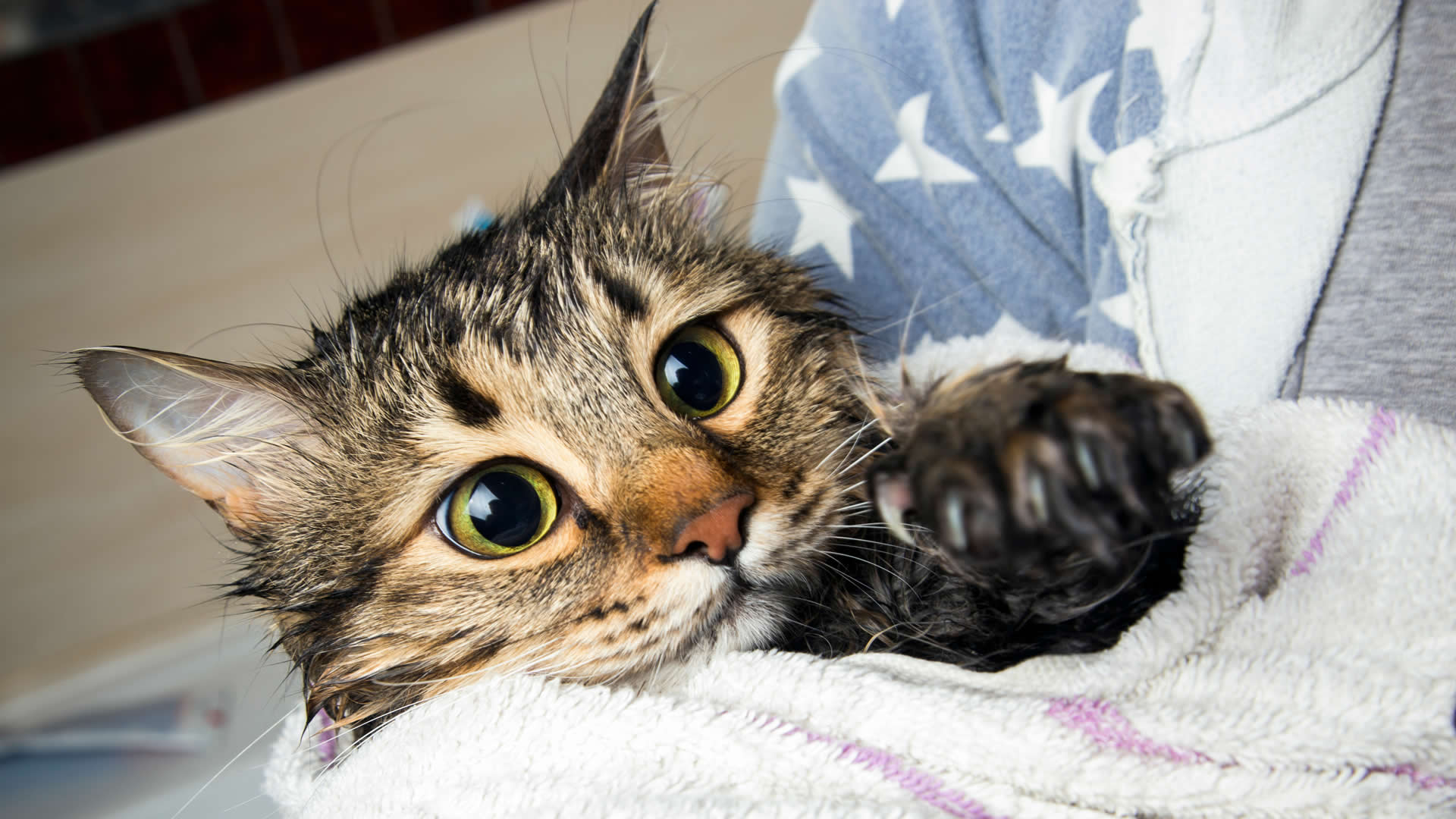
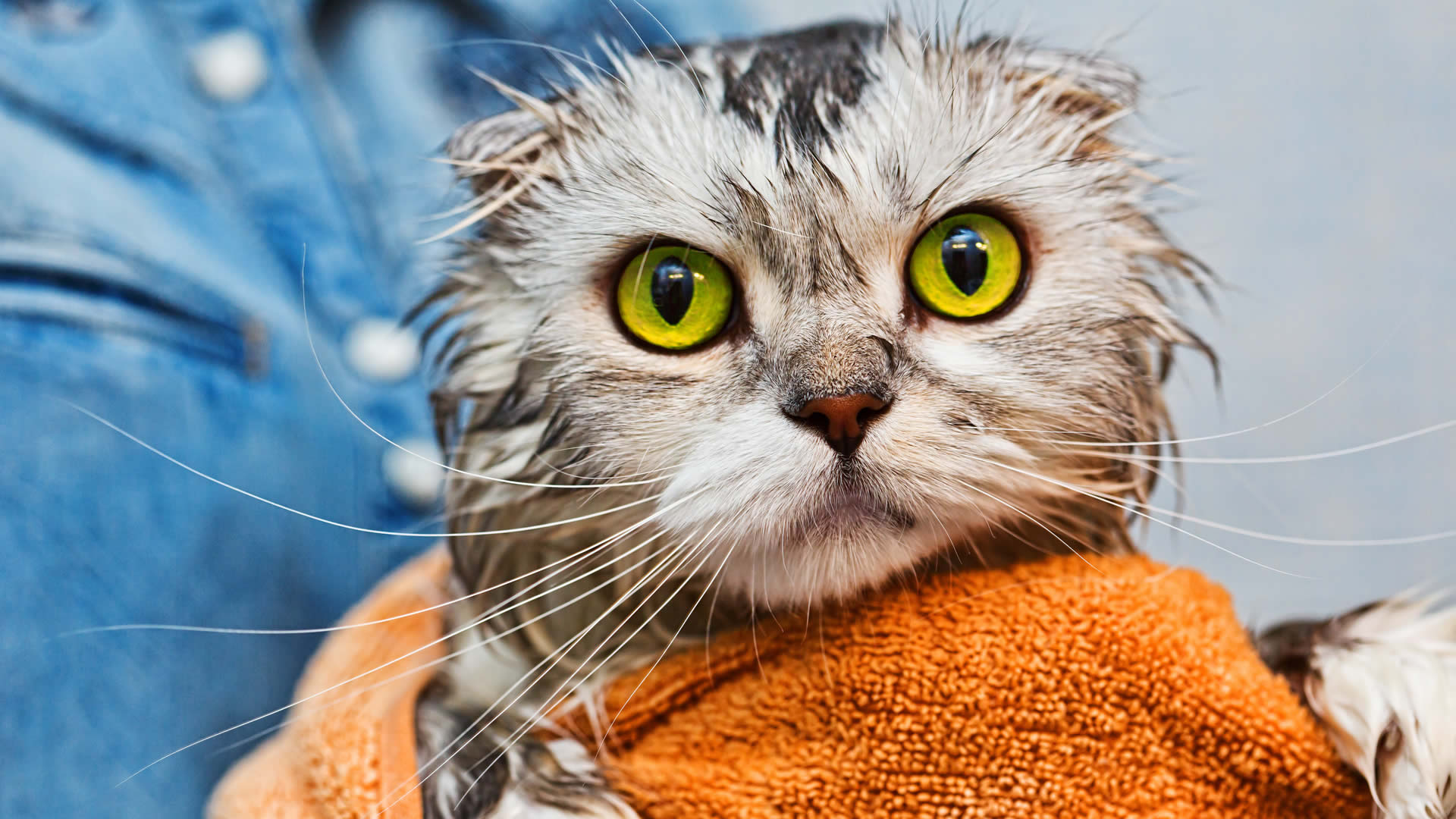
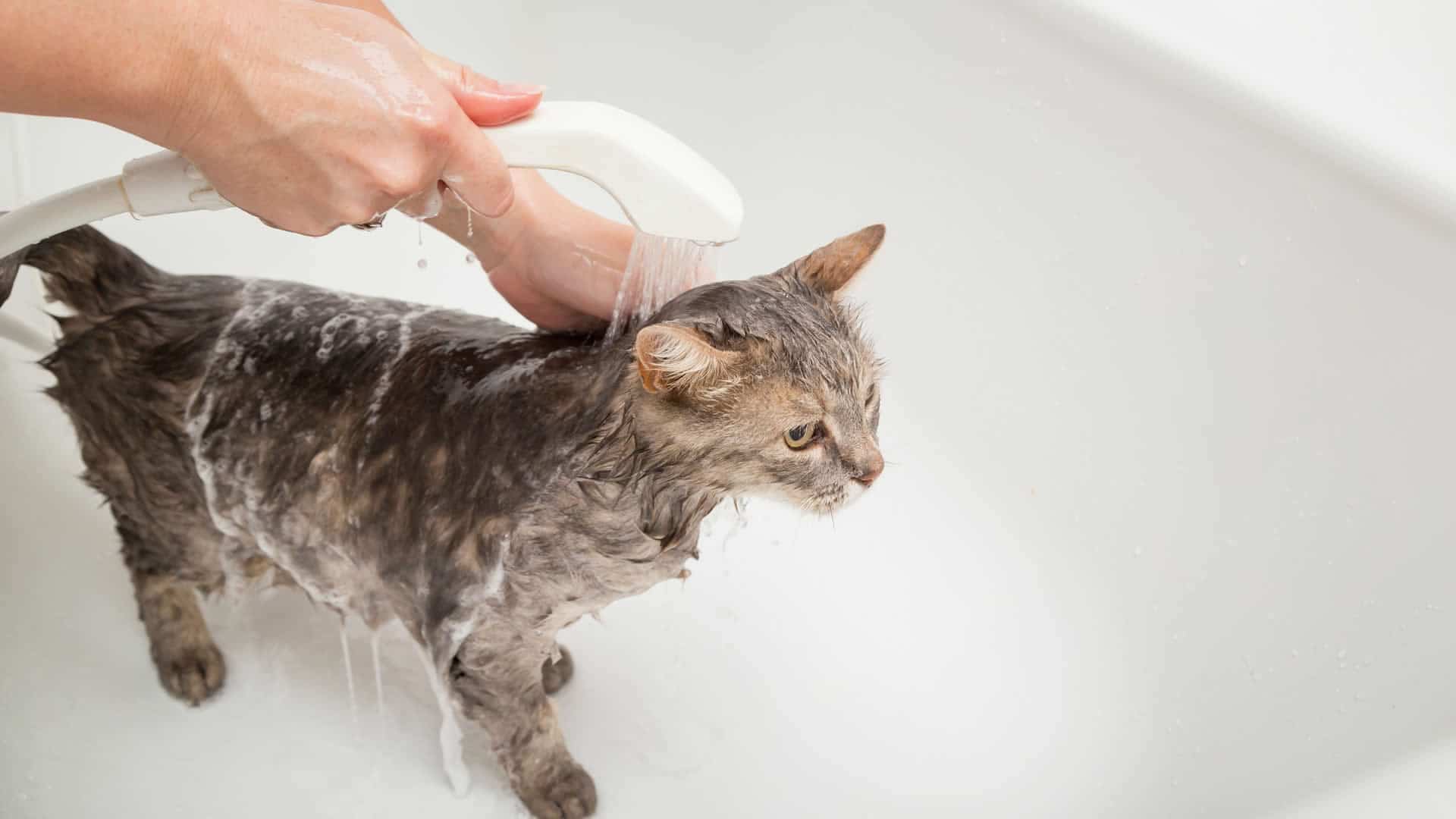
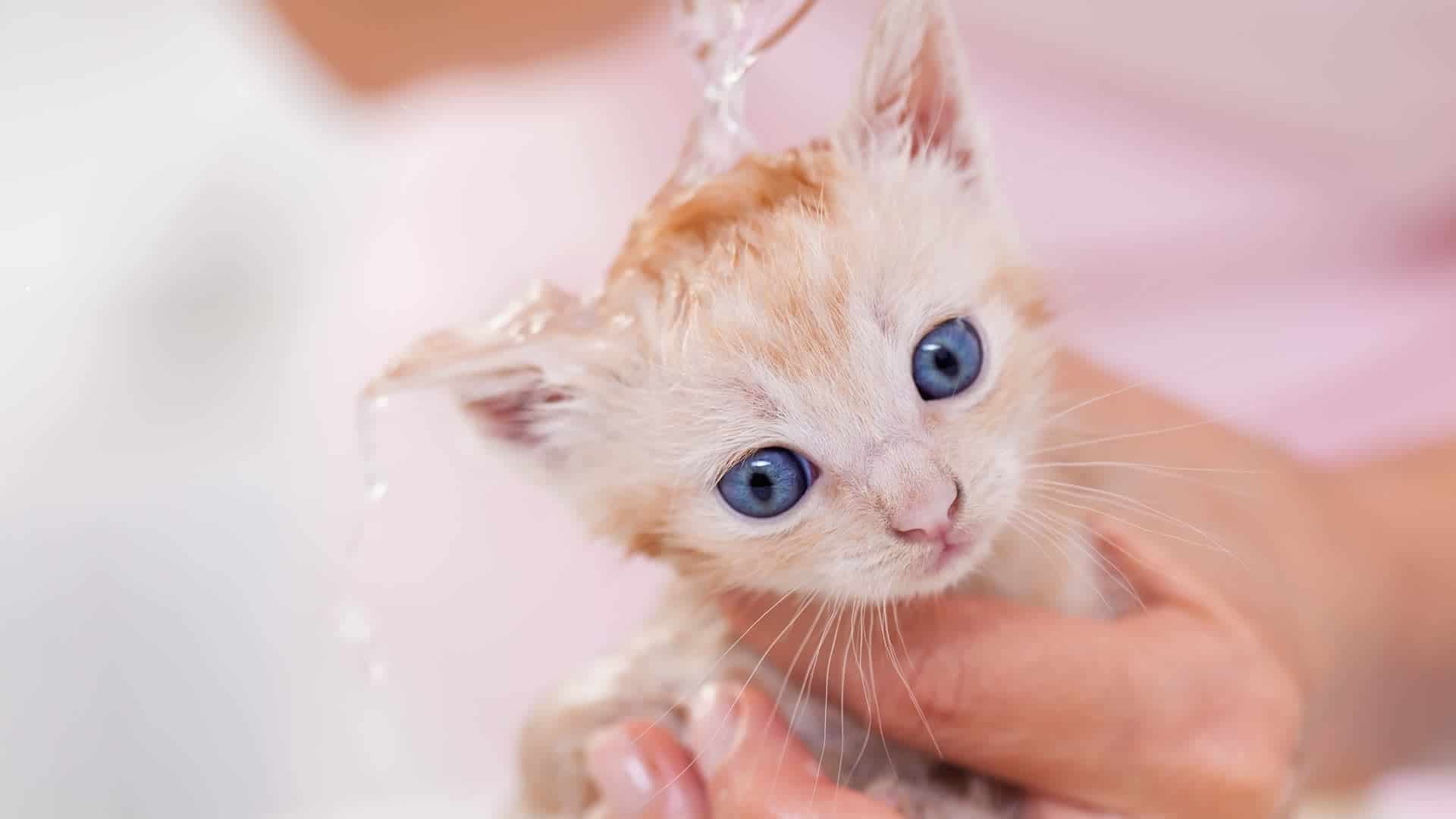
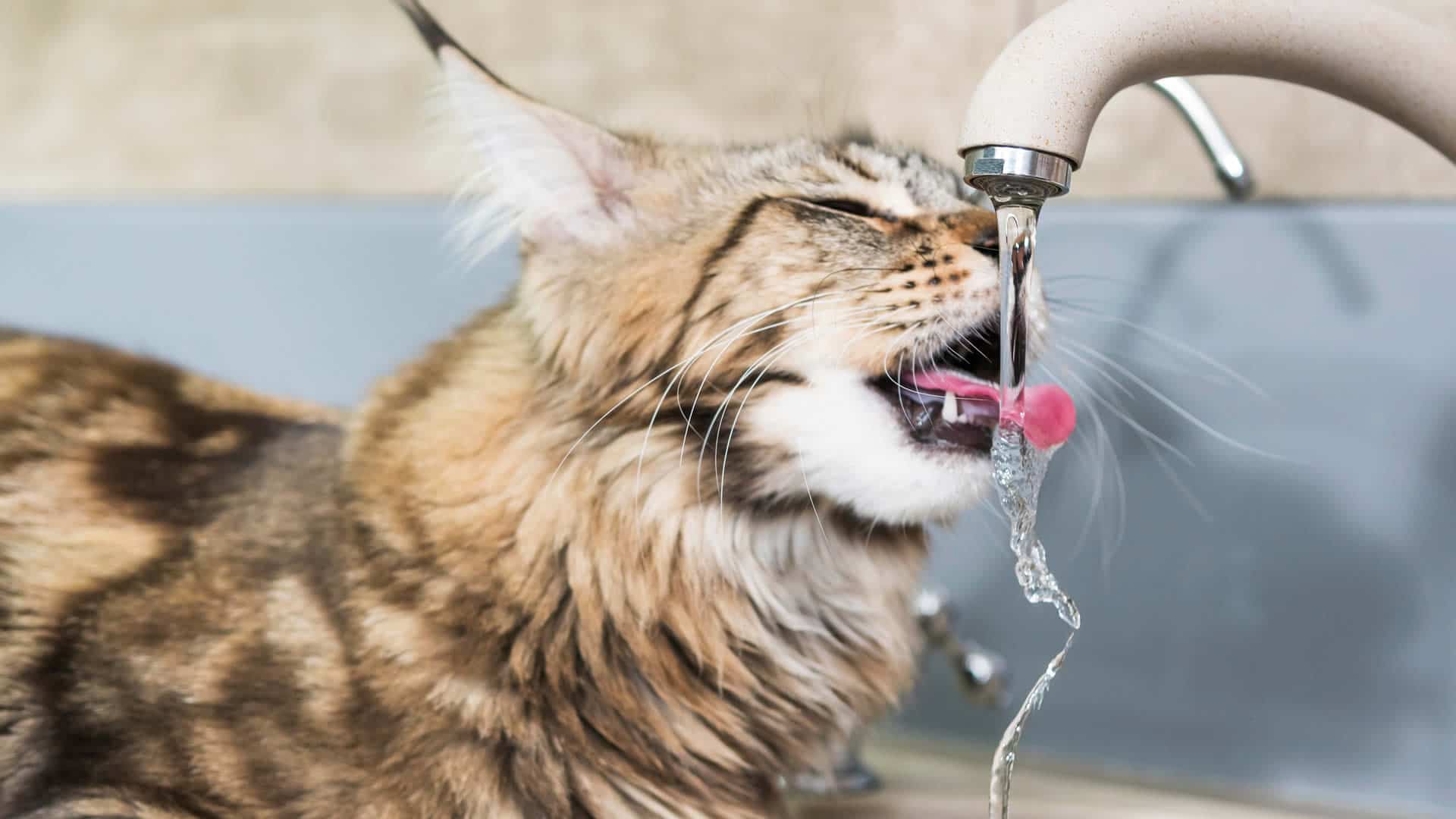
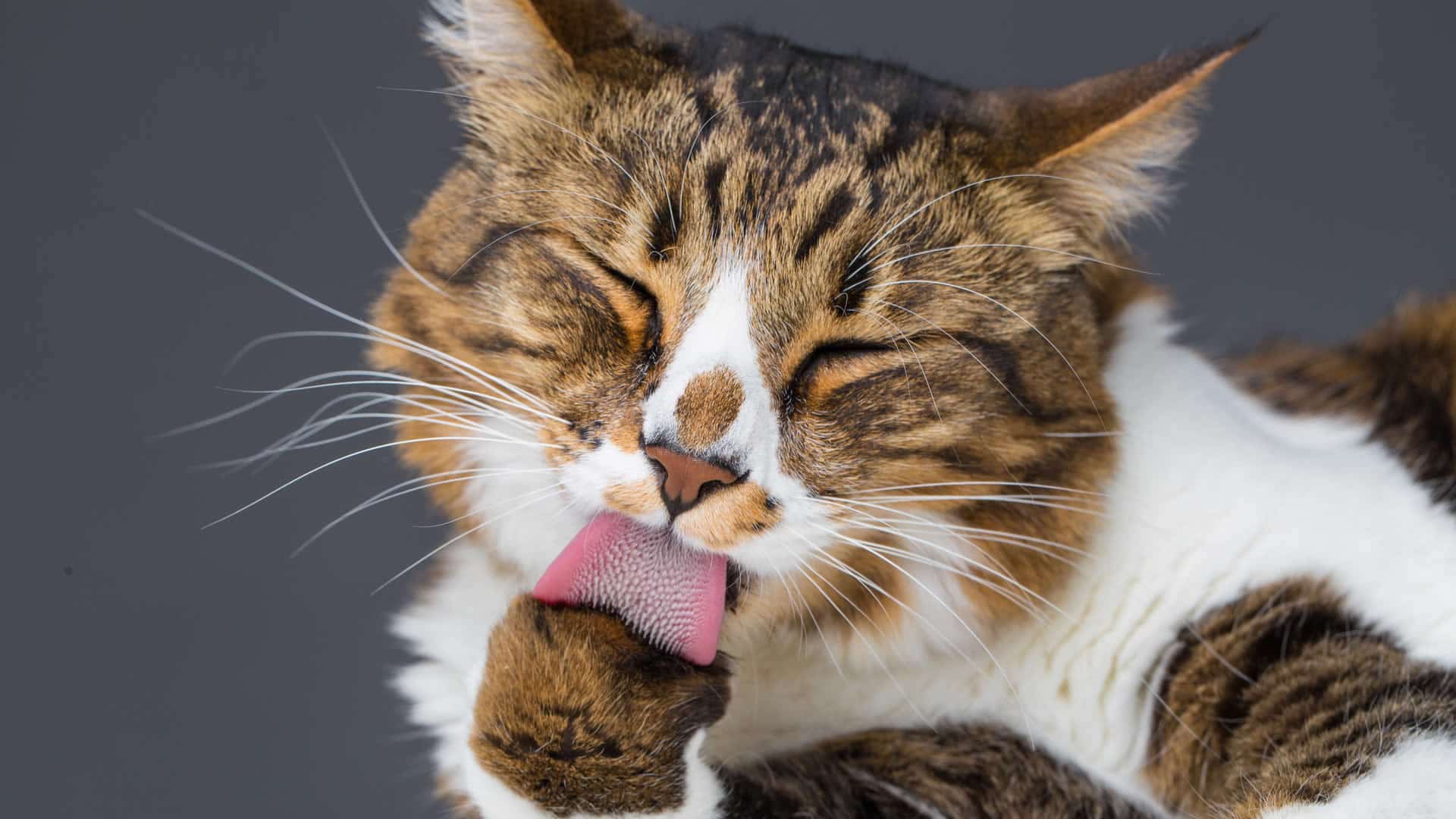
Leave a Reply